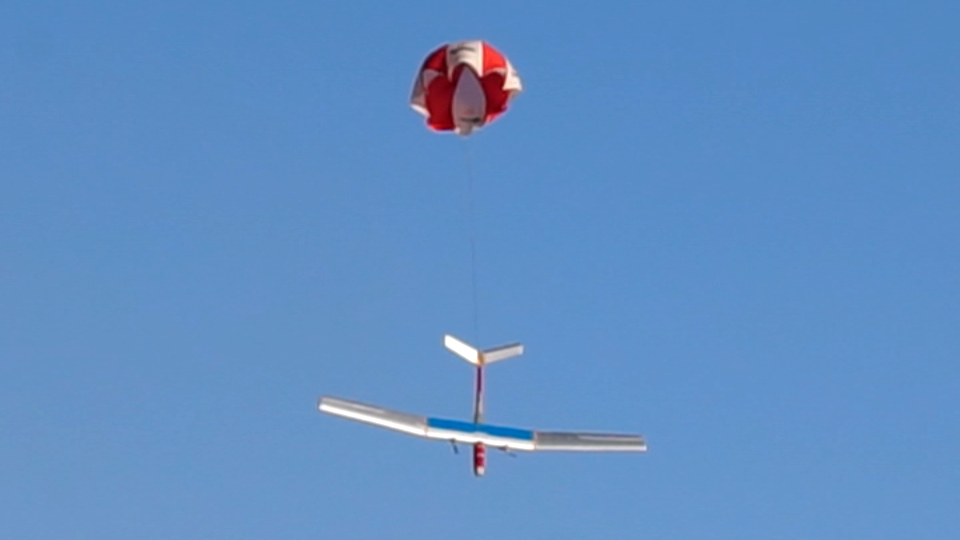
Parachute Recovery of a UAV D3 prototype
Today we tested several times the parachute recovery of the new UAV D3 prototype. In the past, the parachute often got stuck in the hatch. However, the new improved design works better. Now we let the gravitation do all the work and pull out the chute.
The vertical speed was close to our estimate. In general, we are satisfied with the area and the form of the parachute. Therefore, we plan to reuse the design in further parachute recovery tests.
These field tests had one more purpose. We evaluated the dual motor propulsion. We measured the current consumption and compared it with the single engine solution. Additionally, we tested if the autopilot can handle the extra yaw momentum in case of a single engine failure.
To simulate the failure, we switched off one of the engines in midair. The rudder deflection and the size of the control surface could compensate the momentum without a problem. Surprisingly, the stabilization algorithms required no extra tuning. Unfortunately, the consumption increased by more than 50%.
Conclusions
• The improved parachute hatch works much better. However, more parachute recovery tests are required for statically relevant results.
• The double engine solution works fine. The autopilot can handle a single engine failure without further adjustments.
• For a more reliable and redundant system the flight endurance must be sacrificed.
• There is a lot of room for improvement of the double engine propulsion. In this first iteration we reused the same motor and propeller. We have practically doubled the required thrust for a hand launch takeoff. If we dimension the motors and propellers properly then the efficiency will improve. The power consumption will decrease when we use the optimal engine operating point.

